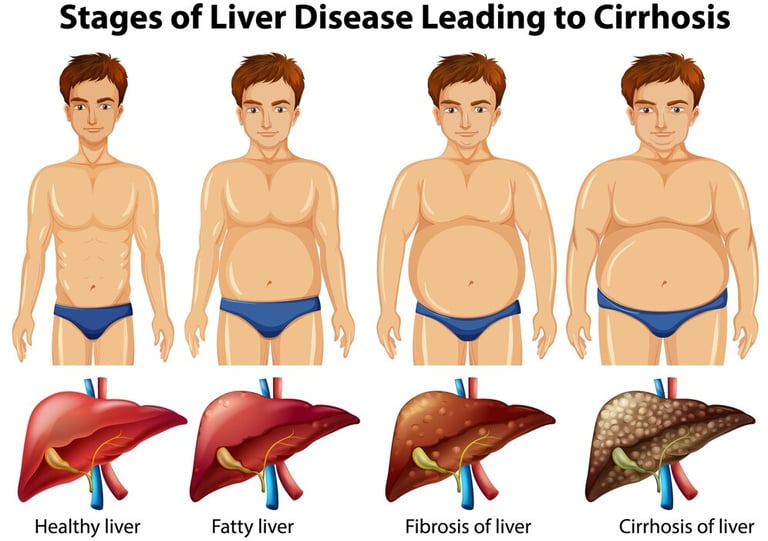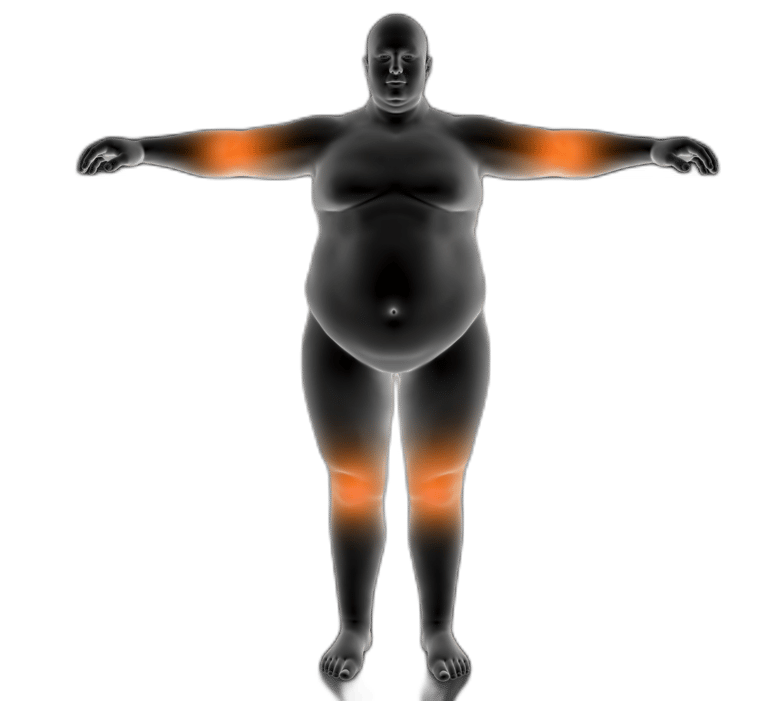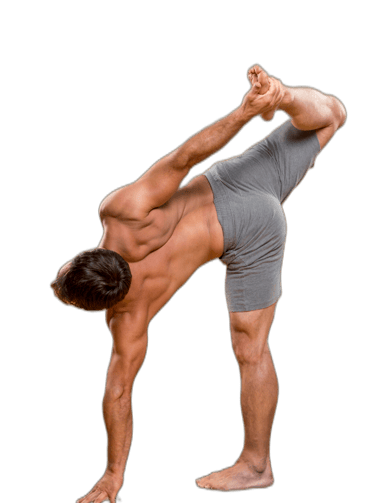BLOG TOPICS
Fitness & Muscle Health by Yoga - English - Click here
Yoga: A Holistic Approach to Combat Fatty Liver
Fatty liver disease, a condition characterized by the accumulation of fat in liver cells, has become increasingly prevalent in our sedentary and fast-paced modern lifestyles. While medical interventions and dietary changes are commonly recommended, incorporating yoga into the routine can offer a holistic approach to managing fatty liver. Yoga, an ancient practice that harmonizes the mind, body, and spirit, has been proven to provide numerous benefits, particularly in addressing the challenges associated with fatty liver disease.
The Impact of Yoga on Fatty Liver:
Stress Reduction: Yoga emphasizes mindful breathing and relaxation techniques, helping to alleviate stress. High-stress levels can contribute to the progression of fatty liver disease. Practices such as deep breathing and meditation activate the parasympathetic nervous system, reducing the release of stress hormones and promoting overall well-being.
Physical Activity: Regular physical activity is crucial for combating fatty liver disease. Yoga, with its gentle yet effective movements, promotes blood circulation and increases oxygen supply to the liver. Poses that engage the abdominal region, such as twists and bends, stimulate the liver and aid in detoxification.
Weight Management: Many individuals with fatty liver disease struggle with weight issues. Certain yoga asanas (poses) facilitate weight management by increasing metabolism and promoting fat loss. Sun Salutations, Warrior poses, and Chair pose are examples of dynamic asanas that engage multiple muscle groups and support weight control.
Improved Digestion: Yoga encourages healthy digestion, which is essential for individuals with fatty liver disease. Poses like Seated Forward Bend (Paschimottanasana) and Wind-Relieving Pose (Pavanamuktasana) massage the abdominal organs, promoting better digestion and nutrient absorption.
Liver-Focused Asanas: Several yoga poses specifically target the liver and aid in its functioning. Incorporating these asanas into a routine can be beneficial for those with fatty liver disease. Some recommended poses include:
Twisting Poses: Twists, such as Bharadvajasana and Ardha Matsyendrasana, enhance the flexibility of the spine and stimulate the liver, promoting detoxification.
Bridge Pose (Setu Bandhasana): This pose engages the core and stimulates the abdominal organs, including the liver. It also improves blood circulation.
Boat Pose (Navasana): Boat pose strengthens the abdominal muscles, promoting a healthy liver and aiding in weight management.
Camel Pose (Ustrasana): This backbend opens up the chest and stretches the abdominal region, benefiting the liver and improving overall digestion.
Incorporating yoga into the management of fatty liver disease offers a comprehensive and holistic approach. The combination of stress reduction, physical activity, weight management, and liver-focused asanas can significantly contribute to the improvement of liver health. It is essential to consult with healthcare professionals before starting any new exercise regimen, especially for individuals with existing health conditions. By embracing yoga as a therapeutic tool, individuals can take positive steps towards a healthier liver and overall well-being.
Yog Shashwatam: A Medicine-Free and Permanent Solution for Fatty Liver through Naturopathy:
Fatty liver, a prevalent health concern in today's sedentary lifestyle, demands a holistic and drugless approach for a permanent solution. In the realm of natural remedies, Yog Shashwatam emerges as a beacon for those seeking a medicine-free solution for fatty liver through the principles of yoga and naturopathy.
The Challenge of Fatty Liver:
Fatty liver disease, a result of lifestyle factors such as poor diet and lack of exercise, often requires comprehensive lifestyle changes for effective management. Recognizing the need for a holistic approach, the Yog Shashwatam program integrates yoga, naturopathy, and drugless solutions to provide a lasting remedy for fatty liver.
Yoga for Fatty Liver:
Yoga, a cornerstone of Yog Shashwatam, plays a pivotal role in addressing fatty liver concerns. The program incorporates specific asanas designed to stimulate the liver, aid in detoxification, and promote overall well-being. Twisting poses, like those found in Yog Shashwatam, are particularly effective in enhancing liver function and reducing fat accumulation.
Naturopathy: A Natural Remedy for Fatty Liver:
The naturopathic principles embedded in Yog Shashwatam emphasize the body's inherent ability to heal itself. Through dietary adjustments, detoxification methods, and lifestyle modifications, this program offers a natural remedy for fatty liver without resorting to pharmaceutical interventions.
Drugless Solution:
Yog Shashwatam stands out as a drugless solution for fatty liver, focusing on empowering individuals to take control of their health without relying on medication. The program encourages a lifestyle shift that aligns with the body's natural rhythms, promoting liver health and overall wellness.
Medicine-Free Solution of Fatty Liver:
Yog Shashwatam proudly advocates a medicine-free approach to fatty liver management. By harnessing the power of yoga and naturopathy, individuals can work towards resolving fatty liver concerns without the need for pharmaceutical interventions.
Permanent Solution of Fatty Liver:
The quest for a permanent solution for fatty liver culminates in the Yog Shashwatam program. Through consistent practice of yoga asanas, adherence to naturopathic principles, and a commitment to a drug-free lifestyle, individuals can achieve lasting results in the management and prevention of fatty liver disease.
In a world where lifestyle diseases are on the rise, Yog Shashwatam stands as a testament to the effectiveness of yoga and naturopathy in providing a medicine-free and permanent solution for fatty liver. Embracing this holistic approach can lead individuals towards a healthier, drugless, and sustainable path to liver wellness.




योग शाश्वतम् का दृष्टिकोण: योग शाश्वतम, योग और समग्र स्वास्थ्य के क्षेत्र में एक समर्पित संगठन, अस्थमा सहित श्वसन संबंधी विकारों को कम करने में योग की क्षमता को पहचानता है। संगठन विशेष सत्र आयोजित करता है जो इन पहलुओं पर ध्यान केंद्रित करता है:
सांस के प्रति जागरूकता और नियंत्रण: योग शास्वतम श्वसन क्रिया को बढ़ाने और शांति की भावना लाने के लिए सचेतन सांस लेने की तकनीक के महत्व पर जोर देता है। अनुकूलित आसन क्रम: योग शास्वतम में प्रशिक्षित प्रशिक्षक अस्थमा से पीड़ित व्यक्तियों की विशिष्ट आवश्यकताओं के अनुरूप योग क्रम तैयार करते हैं, जिसमें श्वसन प्रणाली को मजबूत करने वाले आसन शामिल होते हैं। ध्यान और विश्राम तकनीक: तनाव अस्थमा के लक्षणों के लिए एक आम ट्रिगर है। योग शास्वतम के सत्रों में तनाव को कम करने और समग्र कल्याण को बढ़ावा देने के लिए ध्यान और विश्राम अभ्यास शामिल हैं।
शैक्षिक कार्यशालाएँ: योग शास्वतम श्वसन स्वास्थ्य के लिए योग के लाभों के बारे में जागरूकता बढ़ाने और अस्थमा प्रबंधन के लिए व्यावहारिक उपकरण प्रदान करने के लिए सूचनात्मक कार्यशालाएँ आयोजित करता है।
अस्थमा के प्रबंधन में योग का एकीकरण एक समग्र दृष्टिकोण प्रदान करता है जो शारीरिक और मानसिक दोनों तरह के कल्याण को संबोधित करता है। श्वसन संबंधी विकारों के लिए विशेष सत्र प्रदान करने की योग शाश्वतम की प्रतिबद्धता फेफड़ों की कार्यप्रणाली को बढ़ाने और अस्थमा से पीड़ित व्यक्तियों के लिए जीवन की गुणवत्ता में सुधार करने में योग की क्षमता की बढ़ती मान्यता को दर्शाती है। इन प्राचीन प्रथाओं को आधुनिक स्वास्थ्य देखभाल में शामिल करके, हम श्वसन स्वास्थ्य के लिए एक व्यापक और एकीकृत दृष्टिकोण के करीब एक कदम आगे बढ़ते हैं।
अस्थमा से राहत के लिए योग की शक्ति का उपयोग:
योग शाश्वतम का व्यापक दृष्टिकोण परिचय: अस्थमा एक पुरानी श्वसन स्थिति है जो दुनिया भर में लाखों लोगों को प्रभावित करती है, जिससे सांस लेने में कठिनाई, घरघराहट और सीने में जकड़न होती है। जबकि पारंपरिक चिकित्सा हस्तक्षेप अस्थमा के लक्षणों के प्रबंधन में महत्वपूर्ण भूमिका निभाते हैं, योग जैसे पूरक उपचारों ने श्वसन क्रिया में सुधार और समग्र कल्याण को बढ़ाने की उनकी क्षमता के लिए मान्यता प्राप्त की है। अस्थमा और श्वसन संबंधी विकारों के समाधान के रूप में योग के समर्थकों में से, योग शास्वतम योग के अभ्यास के माध्यम से समग्र स्वास्थ्य को बढ़ावा देने के लिए प्रतिबद्ध संगठन के रूप में सामने आता है। अस्थमा और योग की भूमिका को समझना: अस्थमा की विशेषता वायुमार्ग की सूजन और संकीर्णता है, जिससे व्यक्तियों के लिए स्वतंत्र रूप से सांस लेना चुनौतीपूर्ण हो जाता है। योग, भारत से शुरू हुई एक प्राचीन प्रथा है, जिसमें विभिन्न प्रकार के शारीरिक आसन, साँस लेने के व्यायाम और ध्यान तकनीकें शामिल हैं जो श्वसन स्वास्थ्य पर सकारात्मक प्रभाव डाल सकती हैं। अस्थमा के लिए योगिक आसन: कई योग आसन अस्थमा और अन्य श्वसन विकारों वाले व्यक्तियों के लिए विशेष रूप से फायदेमंद हैं। ये आसन फेफड़ों की क्षमता में सुधार, श्वसन मांसपेशियों को मजबूत करने और विश्राम को बढ़ावा देने पर ध्यान केंद्रित करते हैं। अस्थमा से राहत के लिए अनुशंसित कुछ प्रमुख आसन यहां दिए गए हैं:
सुखासन (आसान मुद्रा): बैठने की यह मुद्रा गहरी सांस लेने को प्रोत्साहित करती है, फेफड़ों को फैलाने और श्वसन क्षमता को बढ़ाने में मदद करती है।
भुजंगासन (कोबरा पोज़): यह बैकबेंड छाती को खोलता है और गहरी सांस लेने को बढ़ावा देता है, जिससे फेफड़ों की कार्यक्षमता बढ़ती है।
सेतु बंधासन (ब्रिज पोज़): छाती, गर्दन और रीढ़ को मजबूत करता है, समग्र श्वसन दक्षता में सुधार करता है।
त्रिकोणासन (त्रिकोण मुद्रा): एक खड़े होकर किया जाने वाला आसन जो पूरे शरीर को शामिल करता है, बेहतर परिसंचरण और फेफड़ों के कार्य को बढ़ावा देता है।
उज्जयी प्राणायाम (विजयी सांस): एक सांस लेने की तकनीक जिसमें गहरी, नियंत्रित सांसें शामिल होती हैं, जो तंत्रिका तंत्र को शांत करने और अस्थमा के लक्षणों को कम करने में मदद करती है।




Asthma (आस्थमा)
1. Question: Can yoga help manage asthma symptoms?
Answer: Yes, yoga can be beneficial for individuals with asthma. Certain yoga practices emphasize controlled breathing, which can improve respiratory function and help manage asthma symptoms. Breathing exercises, or pranayama, can enhance lung capacity and teach individuals to breathe more efficiently, contributing to better asthma control.
2. Question: Are there specific yoga poses that are recommended for people with asthma?
Answer: Yes, some yoga poses can be particularly helpful for individuals with asthma. Gentle poses like Sukhasana (Easy Pose), Bhujangasana (Cobra Pose), and Setu Bandhasana (Bridge Pose) can improve lung function and strengthen respiratory muscles. However, it's crucial to practice under the guidance of a qualified yoga instructor who can tailor the practice to individual needs and limitations.
3. Question: Can yoga be practiced during an asthma attack?
Answer: It is not recommended to practice yoga during an asthma attack. During an acute episode, it is important to focus on using prescribed medications and following a healthcare provider's guidance. Yoga can be incorporated into an asthma management plan during symptom-free periods or with your healthcare professional's approval.
4. Question: How often should someone with asthma practice yoga?
Answer: The frequency of yoga practice for individuals with asthma can vary. Starting with a few sessions per week and gradually increasing frequency is generally advisable. Regular practice, even if brief, can contribute to improved lung function and better asthma control. However, it's crucial to listen to your body and consult with a healthcare professional before starting any new exercise routine.
5. Question: Can yoga replace asthma medications?
Answer: Yoga can complement asthma medications and other prescribed treatments, but it should not be considered a substitute for them. Always follow your healthcare provider's recommendations for medication use. Yoga can be a valuable addition to an overall asthma management plan, helping to enhance respiratory function, reduce stress, and improve overall well-being. However, any adjustments to medications should be made under the guidance of a healthcare professional.
Frequently Asked Questions
Obesity and weight gain stem from a multitude of factors, ranging from genetic predispositions and lifestyle choices to environmental influences. While weight gain refers to a general increase in body mass, obesity specifically implies an excessive accumulation of fat, often leading to adverse health effects. Ignoring weight increase can pose significant risks, as excess body weight is linked to conditions such as heart disease, diabetes, and joint problems.
The threats associated with weight gain are substantial, impacting not only physical health but also mental well-being. Increased body mass places strain on vital organs, disrupts hormonal balance, and heightens the risk of chronic diseases. Recognizing the importance of addressing weight-related concerns, it becomes crucial to explore effective solutions.
Special yoga program from Yog Shashwatam, emerges as a holistic approach to combat obesity. Beyond merely burning calories, this system focuses on correcting the body's metabolism, preventing the accumulation of fat. By incorporating specific postures and breathing techniques, Yog Shashwatam activates the endocrine system, aligning metabolism with the body's unique needs and energy requirements.
The significance of Yog Shashwatam's weight loss program lies not only in shedding excess pounds but in maintaining an optimal body weight throughout one's lifetime. Its proven success worldwide attests to its ability not just to help individuals lose weight but to instill lasting habits that promote a balanced and healthy lifestyle. Through a combination of mindful movements and metabolic corrections, Yog Shashwatam stands as a testament to the transformative power of yoga in fostering sustainable weight management.
Obesity & Weight Gain


मोटापा और वजन बढ़ना आनुवंशिक प्रवृत्तियों और जीवनशैली विकल्पों से लेकर पर्यावरणीय प्रभावों तक कई कारकों से उत्पन्न होता है। जबकि वजन बढ़ना शरीर के द्रव्यमान में सामान्य वृद्धि को संदर्भित करता है, मोटापा विशेष रूप से वसा के अत्यधिक संचय को दर्शाता है, जो अक्सर प्रतिकूल स्वास्थ्य प्रभावों का कारण बनता है। बढ़ते वजन को नज़रअंदाज़ करने से महत्वपूर्ण जोखिम पैदा हो सकते हैं, क्योंकि शरीर का अतिरिक्त वजन हृदय रोग, मधुमेह और जोड़ों की समस्याओं जैसी स्थितियों से जुड़ा होता है।
वजन बढ़ने से जुड़े खतरे काफी बड़े हैं, जो न केवल शारीरिक स्वास्थ्य बल्कि मानसिक स्वास्थ्य पर भी असर डालते हैं। शरीर का बढ़ा हुआ द्रव्यमान महत्वपूर्ण अंगों पर दबाव डालता है, हार्मोनल संतुलन को बाधित करता है, और पुरानी बीमारियों के खतरे को बढ़ाता है। वजन संबंधी चिंताओं को दूर करने के महत्व को पहचानते हुए, प्रभावी समाधान तलाशना महत्वपूर्ण हो जाता है।
योग शाश्वतम का विशेष योग कार्यक्रम, मोटापे से निपटने के लिए एक समग्र दृष्टिकोण के रूप में उभरता है। केवल कैलोरी जलाने से परे, यह प्रणाली शरीर के चयापचय (मेटाबॉलिज्म) को सही करने, वसा (फैट) के संचय को रोकने पर ध्यान केंद्रित करती है। विशिष्ट मुद्राओं और साँस लेने की तकनीकों को शामिल करके, योग शाश्वतम अंतःस्रावी (एंडोक्राइन)तंत्र को सक्रिय करता है, चयापचय को शरीर की विशिष्ट आवश्यकताओं और ऊर्जा आवश्यकताओं के साथ संरेखित करता है।
योग शाश्वतम के वजन घटाने के कार्यक्रम का महत्व न केवल अतिरिक्त पाउंड कम करने में है, बल्कि किसी के जीवनकाल में इष्टतम शारीरिक वजन बनाए रखने में भी है। दुनिया भर में इसकी सिद्ध सफलता न केवल व्यक्तियों को वजन कम करने में मदद करने बल्कि संतुलित और स्वस्थ जीवनशैली को बढ़ावा देने वाली स्थायी आदतें पैदा करने की क्षमता की पुष्टि करती है। ध्यानपूर्ण गतिविधियों और चयापचय सुधारों के संयोजन के माध्यम से, योग शाश्वतम का योग विशेष कार्यक्रम स्थायी वजन प्रबंधन को बढ़ावा देने में योग की परिवर्तनकारी शक्ति के प्रमाण के रूप में प्रणामित हो चुका है।
मोटापा और वजन बढ़ना
1. Question: Can yoga really help in weight loss and combating obesity?
Answer: Yes, yoga can be an effective tool in managing obesity by burning as many calories as any other physical exercise, yoga also helps regulate stress hormones, improve mindfulness, and promote overall well-being. Certain yoga poses and sequences can also enhance metabolism and contribute to weight loss when combined with a balanced diet and regular physical activity.
2. Question: Are there specific yoga poses that target abdominal fat and promote weight loss?
Answer: Yes, there are several yoga poses that engage the core muscles and can contribute to reducing abdominal fat. Poses like Boat Pose (Navasana), Plank Pose, and twists like Seated Spinal Twist (Ardha Matsyendrasana) can help strengthen the abdominal muscles and improve digestion, aiding in weight management.
3. Question: How often should I practice yoga to see results in weight loss?
Answer: Consistency is key. Aim for at least 3-5 sessions per week, incorporating a variety of yoga practices, including both dynamic and restorative sessions. The frequency and intensity can be adjusted based on individual fitness levels and preferences. Pairing yoga with a healthy diet and other forms of exercise will enhance its effectiveness.
4. Question: Can yoga help address emotional eating and stress-related weight gain?
Answer: Absolutely. Yoga places a strong emphasis on mindfulness and stress reduction. Through practices like meditation and deep breathing, it helps manage stress levels and promotes emotional well-being. By addressing the root causes of emotional eating, yoga can contribute to breaking the cycle of unhealthy habits associated with stress-related weight gain.
5. Question: I have limited mobility due to obesity; can I still practice yoga?
Answer: Yes, yoga can be adapted to accommodate various fitness levels and body types. Many yoga poses can be modified to suit individuals with limited mobility or larger bodies. Chair yoga and restorative yoga are excellent options for those with reduced mobility, providing the benefits of relaxation, flexibility, and stress reduction without putting excessive strain on the joints. Always consult with a qualified yoga instructor to ensure the practice is tailored to your specific needs.
Frequently Asked Questions
Intermittent fasting (IF) has emerged as a popular and scientifically supported approach to achieving optimal health and longevity. This dietary strategy involves cycling between periods of eating and fasting, promoting a wide array of benefits that extend across various age groups. From boosting metabolic health to enhancing cognitive function, intermittent fasting has gained attention as a sustainable lifestyle choice. In this article, we delve into the multifaceted advantages of intermittent fasting and explore why individuals of all ages can benefit from its adoption.
The Basics of Intermittent Fasting
Intermittent fasting encompasses several methods, each dictating specific time frames for eating and fasting. The most common approaches include the 16/8 method, where individuals fast for 16 hours and eat within an 8-hour window, and the 5:2 method, which involves regular eating for five days and restricting caloric intake to 500-600 calories on two non-consecutive days. Alternate-day fasting, the warrior diet, and spontaneous meal skipping are other variations that cater to diverse preferences and lifestyles.
Benefits for Different Age Groups
Young Adults (18-35 years)
Young adults can reap several benefits from intermittent fasting, including improved metabolic health and enhanced insulin sensitivity. By promoting the body's ability to regulate blood sugar levels effectively, IF reduces the risk of developing type 2 diabetes. Additionally, this age group may experience heightened energy levels, improved mental clarity, and better weight management.
Middle-Aged Adults (36-60 years)
For individuals in their middle years, intermittent fasting can be a powerful tool for weight maintenance and cardiovascular health. The reduction in inflammation and oxidative stress associated with IF contributes to a lower risk of heart disease. Moreover, the practice has been linked to increased levels of brain-derived neurotrophic factor (BDNF), a protein crucial for cognitive function and memory.
Seniors (60+ years)
Intermittent fasting holds promise for seniors by promoting longevity and mitigating age-related cognitive decline. Studies suggest that IF induces autophagy, a cellular cleanup process that removes damaged cells and cellular components, potentially delaying the onset of neurodegenerative diseases such as Alzheimer's. Improved mitochondrial function and the reduction of chronic inflammation contribute to overall health in the aging population.
Key Mechanisms Behind IF's Benefits
Autophagy:
Intermittent fasting triggers autophagy, a process in which cells remove damaged components, promoting cellular health and longevity. This is particularly significant in preventing age-related diseases.
Hormonal Balance:
IF regulates hormones such as insulin, human growth hormone (HGH), and norepinephrine, which play pivotal roles in metabolism, energy expenditure, and cellular repair. These hormonal shifts contribute to improved overall health and well-being.
Metabolic Flexibility:
By encouraging the body to switch between using glucose and stored fat for energy, intermittent fasting enhances metabolic flexibility. This flexibility helps regulate blood sugar levels and improves the body's ability to adapt to changing nutritional states.
Intermittent fasting is a versatile and sustainable lifestyle choice that offers numerous health benefits across different age groups. From enhanced metabolic health to cognitive function and longevity, the evidence supporting the positive impact of intermittent fasting is compelling. However, it's crucial for individuals to consult with healthcare professionals before embarking on any dietary changes, especially if they have pre-existing health conditions. With its potential to revolutionize the way we approach nutrition, intermittent fasting stands as a beacon for those seeking not only to live longer but to live healthier, more fulfilling lives.


Unlocking Longevity and Optimal Health:
The Comprehensive Guide to Intermittent Fasting Across Age Groups
Q1: What is intermittent fasting (IF)?
A1: Intermittent fasting is an eating pattern that alternates between periods of eating and fasting. It doesn't prescribe specific foods to eat but focuses on when to eat, cycling between periods of eating and fasting.
Q2: What are the different methods of intermittent fasting?
A2: There are several methods of intermittent fasting, including the 16/8 method (16 hours of fasting and an 8-hour eating window), the 5:2 method (eating normally for five days and significantly reducing calorie intake for two non-consecutive days), and the Eat-Stop-Eat method (24-hour fasts once or twice a week).
Q3: What are the potential health benefits of intermittent fasting?
A3: Intermittent fasting has been associated with various health benefits, including weight loss, improved metabolic health, better insulin sensitivity, reduced inflammation, and potential benefits for heart health and brain function.
Q4: Can intermittent fasting help with weight loss?
A4: Yes, intermittent fasting can be an effective strategy for weight loss. By restricting the eating window, it may lead to a reduction in overall calorie intake, which can contribute to weight loss. Additionally, it may enhance fat burning and metabolic rate.
Q5: Is intermittent fasting suitable for everyone?
A5: Intermittent fasting may not be suitable for everyone. Pregnant or breastfeeding women, individuals with a history of eating disorders, and those with certain medical conditions should consult with a healthcare professional before starting an intermittent fasting regimen.
Q6: Does intermittent fasting have an impact on muscle mass?
A6: While some studies suggest that intermittent fasting may help preserve muscle mass during weight loss, it's essential to combine it with proper nutrition and exercise to maintain muscle health. Adequate protein intake and strength training can help minimize muscle loss.
Q7: Can intermittent fasting improve brain health?
A7: Some research suggests that intermittent fasting may have positive effects on brain health. It may promote the production of brain-derived neurotrophic factor (BDNF), a protein associated with cognitive function, and may contribute to a reduced risk of neurodegenerative diseases.
Q8: How should one break a fast during intermittent fasting?
A8: It's advisable to break a fast with a balanced meal that includes protein, healthy fats, and carbohydrates. Foods like lean proteins, vegetables, fruits, and whole grains can be part of a nutritious meal to replenish energy stores and provide essential nutrients.
Q9: Are there potential side effects of intermittent fasting?
A9: Some people may experience side effects such as irritability, headaches, or fatigue when starting intermittent fasting. These symptoms are often temporary and can be alleviated by staying hydrated, ensuring proper nutrition during eating windows, and gradually adapting to the fasting schedule.
Q10: How long does it take to see results with intermittent fasting?
A10: Individual results vary, but some people may notice changes, such as weight loss and improved energy levels, within a few weeks of starting intermittent fasting. Consistency and adherence to the chosen fasting method are key factors in achieving and maintaining desired results.
Frequently Asked Questions
Q1: What are the key components of a weight loss Indian diet?
Answer: The key components include whole grains like brown rice, quinoa, and millet, legumes and pulses such as lentils and chickpeas, a variety of vegetables and fruits, lean protein sources like poultry and fish, healthy fats from nuts and olive oil, and the incorporation of spices and herbs for flavor and potential health benefits.
Q2: How do whole grains contribute to weight loss in the Indian diet?
Answer: Whole grains provide sustained energy, fiber, and essential nutrients. They promote a feeling of fullness, regulate blood sugar levels, and contribute to weight loss by offering a nutritious alternative to refined grains.
Q3: Why are legumes and pulses essential in a weight loss Indian diet?
Answer: Legumes and pulses are rich in protein and fiber, helping control hunger and stabilize blood sugar levels. They are low in fat, making them an excellent choice for those aiming to lose weight while providing essential nutrients.
Q4: How do vegetables and fruits contribute to weight loss in the Indian diet?
Answer: Vegetables and fruits are low in calories, high in fiber, and rich in vitamins, minerals, and antioxidants. Their nutrient density promotes satiety, aids digestion, and contributes to weight loss by supporting overall health.
Q5: Why is lean protein important in a weight loss Indian diet?
Answer: Lean protein sources such as skinless poultry, fish, tofu, and dairy products are essential for muscle maintenance and repair. Protein contributes to a feeling of fullness, preserves lean body mass during weight loss, and supports overall health.
Q6: How do healthy fats fit into a weight loss Indian diet?
Answer: While saturated and trans fats should be limited, healthy fats from nuts, seeds, avocados, and olive oil should be included. These fats support bodily functions, contribute to a sense of satisfaction, and reduce the likelihood of overeating.
Q7: What are the potential benefits of the spices and herbs commonly used in Indian cuisine?
Answer: Spices like turmeric, containing curcumin with anti-inflammatory properties, and herbs like cumin and coriander aid digestion. Additionally, the spices contribute to improved metabolism, supporting the weight loss process.
Q8: How does a weight loss Indian diet promote heart health?
Answer: The inclusion of heart-healthy ingredients such as whole grains and unsaturated fats in the Indian diet can positively impact cardiovascular health, reducing the risk of heart disease.
Q9: How does the Indian diet contribute to blood sugar regulation?
Answer: The fiber content in whole grains, legumes, and vegetables helps regulate blood sugar levels, promoting better insulin sensitivity and reducing the risk of type 2 diabetes.
Q10: What is the significance of adopting a weight loss Indian diet for overall well-being?
Answer: Adopting a weight loss Indian diet involves embracing a diverse array of nutrient-rich foods, promoting sustained weight loss, balanced nutrition, improved metabolism, heart health, and blood sugar regulation, contributing to overall health and well-being.
Frequently Asked Questions
In the pursuit of overall well-being, the synergy between fitness and muscle health plays a pivotal role. While traditional forms of exercise like weightlifting and cardio have long been championed for their effectiveness, the ancient practice of yoga has emerged as a holistic approach that not only enhances flexibility and balance but also significantly contributes to muscle health. In this article, we will explore the transformative power of yoga in promoting muscle strength, flexibility, and overall fitness.
Understanding Yoga: A Holistic Approach to Fitness
Yoga, with its roots dating back thousands of years in ancient India, is a discipline that harmonizes the mind, body, and spirit. It encompasses a diverse range of practices, including physical postures (asanas), breath control (pranayama), meditation, and ethical principles. Unlike many conventional exercise routines that focus solely on isolated muscle groups, yoga takes a comprehensive approach, engaging multiple muscle groups simultaneously and promoting functional strength.
Building Strength Through Asanas
The physical postures in yoga, or asanas, are central to the practice and serve as a foundation for building muscle strength. Poses such as Downward-Facing Dog, Warrior series, and Plank require the engagement of various muscle groups, promoting strength development in both the upper and lower body. Unlike high-intensity workouts that may lead to muscle fatigue, yoga encourages controlled movements, fostering endurance and resilience in the muscles.
Enhancing Flexibility and Range of Motion
One of the distinguishing features of yoga is its emphasis on flexibility. Through a series of dynamic stretches and poses, yoga systematically works on improving flexibility and joint mobility. This increased range of motion not only reduces the risk of injuries but also aids in better muscle function. The gentle, elongating movements inherent in yoga postures contribute to improved flexibility without subjecting the muscles to excessive strain.
Stress Reduction and Muscle Tension Release
Beyond the physical aspects, yoga offers mental benefits that indirectly contribute to muscle health. Chronic stress and tension can lead to muscle tightness and discomfort. The mindfulness cultivated in yoga, through practices such as meditation and conscious breathing, helps alleviate stress. As the mind relaxes, so do the muscles, promoting a more harmonious relationship between the body and the mind.
Balancing Muscle Groups for Symmetry
Unlike some traditional fitness routines that may inadvertently neglect certain muscle groups, yoga promotes balance and symmetry in muscle development. Many yoga poses require the engagement of opposing muscle groups, ensuring that the body is strengthened uniformly. This balanced approach not only enhances physical aesthetics but also reduces the risk of overuse injuries associated with muscle imbalances.
Adaptable to All Fitness Levels
One of the key strengths of yoga is its adaptability to various fitness levels. Whether you're a seasoned athlete or a beginner, the practice can be tailored to suit individual needs and capabilities. Yoga encourages practitioners to listen to their bodies and progress at their own pace, making it accessible to a wide range of individuals seeking to improve muscle health.
In the pursuit of optimal fitness and muscle health, yoga stands out as a transformative and holistic approach. By integrating physical postures, breath control, and mindfulness, yoga not only builds muscle strength and flexibility but also fosters a harmonious connection between the mind and body. As individuals continue to seek comprehensive approaches to fitness, the ancient wisdom of yoga proves to be a timeless and invaluable resource for cultivating enduring muscle health.


Fitness & Muscle Health by Yoga
Elevating Muscle Health: The Transformative Power of Yoga in Fitness
Q1: What is the primary focus of yoga in promoting muscle health?
Answer: The primary focus of yoga in promoting muscle health lies in its holistic approach, engaging various muscle groups simultaneously through physical postures (asanas), breath control (pranayama), and mindfulness practices.
Q2: How do yoga asanas contribute to muscle strength?
Answer: Yoga asanas, such as Downward-Facing Dog, Warrior series, and Plank, require the engagement of multiple muscle groups, promoting controlled movements that foster strength development in both the upper and lower body.
Q3: What distinguishes yoga from traditional exercise routines in terms of muscle engagement?
Answer: Unlike traditional exercise routines that often focus on isolated muscle groups, yoga takes a comprehensive approach, encouraging the engagement of multiple muscle groups simultaneously, promoting functional strength.
Q4: How does yoga contribute to flexibility and joint mobility?
Answer: Yoga incorporates dynamic stretches and poses that systematically work on improving flexibility and joint mobility. The gentle, elongating movements in yoga postures contribute to increased range of motion without subjecting the muscles to excessive strain.
Q5: How does yoga help in reducing muscle tension and stress?
Answer: The mindfulness cultivated in yoga, through practices such as meditation and conscious breathing, helps alleviate stress. As the mind relaxes, muscle tension decreases, promoting a more harmonious relationship between the body and mind.
Q6: Why is balance in muscle development important, and how does yoga address this?
Answer: Yoga promotes balance and symmetry in muscle development by requiring the engagement of opposing muscle groups in many poses. This balanced approach enhances physical aesthetics and reduces the risk of overuse injuries associated with muscle imbalances.
Q7: Can individuals of all fitness levels benefit from yoga?
Answer: Yes, yoga is adaptable to various fitness levels. Whether a seasoned athlete or a beginner, the practice can be tailored to suit individual needs and capabilities, making it accessible to a wide range of individuals seeking to improve muscle health.
Q8: How does yoga contribute to overall well-being beyond physical benefits?
Answer: Yoga contributes to overall well-being by fostering a harmonious connection between the mind and body. The practice's mindfulness elements, such as meditation and conscious breathing, contribute to stress reduction, indirectly benefiting muscle health.
Q9: What role does yoga play in preventing injuries associated with muscle imbalances?
Answer: Yoga's emphasis on balanced muscle development helps prevent injuries associated with muscle imbalances by engaging opposing muscle groups. This approach ensures that the body is strengthened uniformly, reducing the risk of overuse injuries.
Q10: Why is yoga considered a timeless and invaluable resource for muscle health?
Answer: Yoga is considered a timeless and invaluable resource for muscle health due to its adaptability, holistic approach, and ability to promote strength, flexibility, and balance while fostering a harmonious connection between the mind and body.
Frequently Asked Questions
मानव जीवन की गतिविधियों और दैहिक-मानसिक स्वास्थ्य के बीच गहरा संबंध है। मानसिक तनाव, चिंता, और अवसाद जैसी समस्याएं जीवन को प्रभावित कर सकती हैं, लेकिन योग एक प्राचीन भारतीय अभ्यास है जो इन समस्याओं के समाधान में मदद कर सकता है। इस लेख में, हम योग के माध्यम से मानसिक तनाव, चिंता, और अवसाद को कैसे संभाला जा सकता है, उस पर विचार करेंगे।
योग और मानसिक स्वास्थ्य:
आसन (Postures): योग में विभिन्न आसन होते हैं जो शारीरिक समर्थ, लचीलापन, और मानसिक स्थिति में सुधार करने में मदद करते हैं। ध्यान से भरपूर आसन, जैसे कि त्रिकोणासन और वृक्षासन, मानसिक तनाव को कम करने में सहायक होते हैं।
प्राणायाम (Breathing Exercises): योग में प्राणायाम का महत्वपूर्ण स्थान है, जिसमें शुद्ध और गहरी श्वास-प्रश्वास विधान किया जाता है। नियमित प्राणायाम से अच्छी तरह से ऑक्सीजन प्राप्त होती है और मानसिक स्वास्थ्य को सुधारने में मदद करता है।
ध्यान और मनोनिग्रह (Meditation and Mindfulness): योग में ध्यान और मनोनिग्रह की अभ्यासना करने से मानसिक तनाव और चिंता कम हो सकती है। यह मानसिक शांति और स्थिरता लाने में सहायक हो सकता है जो अवसाद को कम करने में मदद करता है।
योग का सामना करने का तरीका:
नियमित अभ्यास: योग का नियमित अभ्यास करने से ही उसके पूरे प्रभाव को महसूस किया जा सकता है। रोजाना कुछ मिनटों के लिए योग का अभ्यास करना मानसिक स्वास्थ्य को बनाए रखने में मदद कर सकता है।
संगीत और प्रेरणा: योग के अभ्यास के दौरान संगीत और प्रेरणादायक विचारों का सहारा लेना मानसिक तनाव को कम करने में मदद कर सकता है।
गुरुकुल (Yoga Classes): योग क्लासेस में शामिल होकर एक प्रेरणादायक माहौल में योग का अभ्यास करना भी फायदेमंद हो सकता है।
तनाव, चिंता, अवसाद, और अनिंसोमनिया: योग का विशेष असर
तनाव:
योग तनाव को कम करने में अत्यधिक प्रभावी है। ध्यान और मननीय आसनों का अभ्यास करने से, योग साधक को अपने अंतर्मन को नियंत्रित करने और सकारात्मक भावना की ओर बढ़ने का कौशल सिखाता है। ध्यान के साथ संगत आसनों का प्रयोग करने से, तनाव के कारण होने वाले शारीरिक और मानसिक दुखों में कमी होती है।
चिंता:
योग चिंता को हल करने में एक महत्वपूर्ण और प्रभावी साधन है। योग के माध्यम से व्यक्ति अपने आत्मसमर्पण को बढ़ाता है और चिंता से मुक्ति प्राप्त करता है। योगासन और प्राणायाम की प्रैक्टिस से तन, मन, और आत्मा को एकजुट करने का अभ्यास होता है, जिससे चिंता और उत्तेजना कम होती है और व्यक्ति में शांति की भावना बढ़ती है।
अवसाद:
योग अवसाद के खिलाफ एक शक्तिशाली साधन है, जो मानसिक स्वास्थ्य को सुधारने में मदद करता है। ध्यान, प्राणायाम, और आसनों का अभ्यास करने से व्यक्ति अपने आत्मविश्वास को बढ़ाता है और नकारात्मक भावनाओं को दूर करने का सामर्थ्य प्राप्त करता है। योग ने भी हारमोनिज़्ड न्यूरोट्रांसमिटर्स की वृद्धि के माध्यम से मानसिक बल को बढ़ावा देने के लिए एकाधिकारी भूमिका निभाई है।
अनिंसोमनिया:
योग अनिंसोमनिया के समस्या से ग्रस्त व्यक्तियों को सुलाने में सहायक हो सकता है। योग निद्रा तकनीक और विशेष प्राणायाम के अभ्यास से, व्यक्ति अपनी नींद को विशेष रूप से सुधार सकता है। योग निद्रा शांति और आत्म-समर्पण की अवस्था में व्यक्ति को पहुंचा कर, सुन्दर सपनों को बूढ़ापेरे बिना पुरा करने में मदद कर सकता है।
इस प्रकार, योग एक पूर्ण स्वास्थ्य लाभ प्रदान करने वाला अद्वितीय साधन है, जो तनाव, चिंता, अवसाद, और अनिंसोमनिया को दूर करने में मदद कर सकता है। यह न केवल शारीरिक स्वास्थ्य को सुधारता है, बल्कि मानसिक स्वास्थ्य को भी बढ़ावा देता है|


तनाव, चिंता, अवसाद, और अनिंसोमनिया: योग का विशेष असर
Yoga in stress, anxiety, depression & insomnia
प्रश्न और उत्तर: मानसिक तनाव, चिंता और अवसाद पर योग का प्रभाव
प्रश्न 1: मानसिक तनाव क्या है और इसके क्या कारण हो सकते हैं?
उत्तर: मानसिक तनाव एक स्थिति है जिसमें व्यक्ति को जीवन के प्रति असुरक्षितता का अहसास होता है। कारण विभिन्न हो सकते हैं, जैसे कि काम की जोरदार दिनचर्या, परिवार संबंधों में कठिनाई, या आर्थिक समस्याएं।
प्रश्न 2: योग में आसन का क्या महत्व है और इससे कैसे मानसिक तनाव को कम किया जा सकता है?
उत्तर: योग में आसन शारीरिक समर्थ, लचीलापन, और मानसिक स्थिति में सुधार करने में मदद करते हैं। ध्यान से भरपूर आसन, जैसे कि त्रिकोणासन और वृक्षासन, मानसिक तनाव को कम करने में सहायक हो सकते हैं।
प्रश्न 3: प्राणायाम क्या है और इसका मानसिक स्वास्थ्य पर कैसा प्रभाव होता है?
उत्तर: प्राणायाम योग में अहम भूमिका निभाता है और शुद्ध और गहरी श्वास-प्रश्वास की अभ्यासना कराता है। नियमित प्राणायाम से ऑक्सीजन प्राप्त होती है और मानसिक स्वास्थ्य को सुधारने में मदद करता है।
प्रश्न 4: योग में ध्यान और मनोनिग्रह क्या है और इसके क्या फायदे हैं?
उत्तर: योग में ध्यान और मनोनिग्रह की अभ्यासना से मानसिक तनाव और चिंता कम हो सकती है। यह मानसिक शांति और स्थिरता लाने में सहायक हो सकता है जो अवसाद को कम करने में मदद करता है।
प्रश्न 5: योग का नियमित अभ्यास करने के लिए कुछ सुझाव दीजिए।
उत्तर: योग का नियमित अभ्यास करने के लिए रोजाना कुछ मिनटों के लिए योग का अभ्यास करें। संगीत और प्रेरणादायक विचारों का सहारा लें और योग क्लासेस में शामिल होकर सामूहिक और प्रेरणादायक माहौल में अभ्यास करें।
Frequently Asked Questions
Conventional approaches to cancer treatment typically include surgery, chemotherapy, radiation therapy, immunotherapy, and targeted therapy. These methods aim to remove or destroy cancer cells and prevent their further growth. The effectiveness of these treatments depends on factors such as the type and stage of cancer, as well as individual patient characteristics.
Yoga, meditation, and naturopathy are often considered complementary or integrative therapies, meaning they are used alongside conventional medical treatments to enhance overall well-being and help manage symptoms. These approaches are not intended to replace standard cancer treatments but may offer supportive benefits. Here's how these practices may be applied:
Yoga:
Physical Benefits: Yoga involves a series of postures and movements that can enhance flexibility, strength, and balance. For cancer patients, especially those dealing with the physical impact of treatments like surgery or chemotherapy, yoga can be adapted to suit individual needs.
Psychological Benefits: The practice of yoga often includes mindfulness, deep breathing, and meditation. These components can help reduce stress and promote mental well-being. Cancer patients may experience anxiety and depression, and yoga provides a holistic approach to address both physical and mental health.
Quality of Life: Engaging in regular yoga practice has been associated with an improved quality of life for cancer patients. It can offer a sense of empowerment and control over one's body and emotions.
Meditation:
Stress Reduction: Meditation techniques, such as mindfulness meditation, encourage individuals to be present in the moment. This can be particularly helpful for cancer patients who may be grappling with the uncertainty of their condition. Reducing stress is not only beneficial for mental health but may also have positive effects on the body's overall ability to cope with illness.
Pain Management: While meditation is not a substitute for pain medication, it may complement conventional pain management strategies. Techniques like guided imagery or focused attention can help individuals better manage pain and discomfort.
Naturopathy:
Nutrition: Naturopathic practitioners often focus on the importance of a well-balanced diet. For cancer patients, maintaining good nutrition is crucial for supporting the body's immune system and overall health. Nutrition plans may be personalized based on the specific needs and challenges of each patient.
Herbal Supplements: Some cancer patients explore herbal supplements as part of their naturopathic approach. It's important to approach this aspect with caution, as certain herbs may interact with conventional cancer treatments or have side effects. It's essential for patients to communicate openly with their healthcare team about any supplements they are considering.
In summary, the integration of yoga, meditation, and naturopathy into cancer care is often about addressing the whole person—physically, emotionally, and spiritually. These practices are not meant to replace standard medical treatments but rather to complement them. The field of integrative oncology recognizes the importance of combining evidence-based conventional treatments with supportive therapies that contribute to the overall well-being of cancer patients.
Individuals considering these complementary approaches should discuss their plans with their oncologist or healthcare team to ensure that they are safe and appropriate for their specific circumstances. Open communication between patients and healthcare providers is crucial for developing a comprehensive and personalized cancer treatment plan.


Complementary Therapies in
Cancer Care
Integrating Yoga, Meditation, and Naturopathy for Holistic Well-being
Q1: What role does yoga play in supporting cancer patients during treatment?
A1: Yoga offers physical benefits by improving flexibility and strength, while its mindfulness components help reduce stress and anxiety. Regular practice has been associated with an enhanced quality of life for cancer patients.
Q2: How does meditation contribute to the well-being of individuals undergoing cancer treatment?
A2: Meditation, particularly mindfulness techniques, aids in stress reduction and provides a mental coping mechanism. It may also assist in pain management, complementing conventional strategies for cancer-related discomfort.
Q3: In what ways does naturopathy contribute to cancer care, especially concerning nutrition?
A3: Naturopathy emphasizes a well-balanced diet, crucial for supporting the immune system during cancer treatment. Personalized nutrition plans are often designed to address the specific needs of each patient.
Q4: Can herbal supplements be a part of cancer care through naturopathy, and what precautions should be taken?
A4: Some naturopathic approaches may include herbal supplements. However, patients must exercise caution as certain herbs may interact with conventional treatments. Open communication with healthcare providers is essential to ensure safety.
Q5: How do these complementary therapies integrate with conventional cancer treatments?
A5: Complementary therapies like yoga, meditation, and naturopathy are meant to complement, not replace, standard cancer treatments. They contribute to a holistic approach, addressing physical, emotional, and spiritual aspects of well-being.
Q6: What is the importance of open communication between cancer patients and their healthcare teams regarding complementary therapies?
A6: Open communication is crucial to ensure the safety and appropriateness of complementary therapies. Patients should discuss their plans with healthcare providers to create a comprehensive and personalized cancer treatment strategy.
Q7: How does integrative oncology aim to provide comprehensive care for cancer patients?
A7: Integrative oncology combines evidence-based conventional treatments with supportive therapies, recognizing the importance of addressing the whole person for optimal well-being during cancer care.
Frequently Asked Questions
Arthritis, a common and often debilitating condition, affects millions of people worldwide, causing pain, stiffness, and reduced mobility. While conventional medical treatments provide essential relief, an increasing number of individuals are turning to complementary and alternative approaches to manage arthritis symptoms. Among these approaches, yoga has emerged as a valuable and holistic practice that not only promotes flexibility and strength but also offers numerous benefits for arthritis sufferers.
Understanding Arthritis:
Arthritis encompasses a range of conditions characterized by inflammation in the joints, leading to pain, swelling, and reduced joint function. Osteoarthritis and rheumatoid arthritis are the two most prevalent forms, affecting people of all ages. Managing arthritis involves a multifaceted approach, combining medication, physical therapy, and lifestyle modifications.
Yoga and its Therapeutic Benefits:
Yoga, an ancient practice that originated in India, combines physical postures, breath control, and meditation. Its therapeutic benefits extend beyond the realms of stress reduction and flexibility, making it a promising adjunct therapy for arthritis. Here are several ways in which yoga proves to be useful for arthritis sufferers:
Improved Flexibility and Joint Function:
Yoga involves gentle stretching and range-of-motion exercises, promoting flexibility in the joints.
Enhanced flexibility contributes to increased joint function, reducing stiffness and promoting ease of movement.
Strengthening Muscles:
Yoga postures emphasize the use of body weight for resistance, helping to build muscle strength around the joints.
Stronger muscles provide better support to the joints, potentially reducing pain and discomfort.
Pain Management:
Mindful breathing and meditation techniques in yoga can help individuals manage pain perception.
By promoting relaxation and reducing stress, yoga may alleviate some of the psychological aspects of pain associated with arthritis.
Joint Stability and Balance:
Yoga poses often involve balancing, which enhances joint stability and improves overall balance.
Better balance reduces the risk of falls, a significant concern for arthritis patients.
Inflammation Reduction:
Studies suggest that yoga may have anti-inflammatory effects, potentially mitigating the inflammatory processes associated with arthritis.
Chronic inflammation is a key factor in the progression of arthritis, and any measure to reduce it can be beneficial.
Enhanced Quality of Life:
Regular yoga practice has been linked to improved sleep, reduced stress, and enhanced mood.
For arthritis sufferers, these benefits contribute to an overall improved quality of life, despite the challenges posed by the condition.
Adapting Yoga for Arthritis:
It's crucial for individuals with arthritis to approach yoga mindfully and adapt the practice to their specific needs. Consulting with a healthcare professional or a qualified yoga instructor experienced in working with arthritis patients is recommended. Modifications to poses, the use of props, and consideration of individual limitations can make yoga safe and effective for those managing arthritis.
Conclusion:
Yoga's holistic approach to physical and mental well-being makes it a valuable tool in managing the symptoms of arthritis. While it may not be a cure, regular practice can contribute significantly to improved joint function, reduced pain, and an enhanced overall quality of life. As with any complementary therapy, individuals should consult with their healthcare providers to ensure that yoga aligns with their treatment plan and is tailored to their specific condition. Embracing the healing power of yoga offers arthritis sufferers a natural and empowering avenue for cultivating strength, flexibility, and inner peace in the face of this challenging condition.


The Healing Power of Yoga
A Remedy for Arthritis
Q1: What is arthritis, and how does it impact individuals?
A1: Arthritis is a group of conditions characterized by inflammation in the joints, resulting in symptoms such as pain, swelling, and reduced mobility. It can impact people of all ages and commonly presents as osteoarthritis or rheumatoid arthritis.
Q2: Why is yoga considered a valuable practice for individuals with arthritis?
A2: Yoga is considered valuable for individuals with arthritis due to its holistic approach, incorporating gentle stretching, strengthening exercises, and mindfulness. It promotes flexibility, muscle strength, and mental well-being, offering benefits that align with the needs of arthritis sufferers.
Q3: How does yoga contribute to improved flexibility and joint function in arthritis patients?
A3: Yoga involves gentle stretching and range-of-motion exercises that target the joints. Regular practice promotes increased flexibility, reducing stiffness and enhancing joint function over time.
Q4: In what ways does yoga help in strengthening muscles around the joints?
A4: Yoga postures emphasize using body weight for resistance, which helps build muscle strength. Stronger muscles provide better support to the joints, potentially reducing pain and discomfort associated with arthritis.
Q5: Can yoga aid in pain management for individuals with arthritis?
A5: Yes, yoga can aid in pain management for arthritis sufferers. Mindful breathing and meditation techniques in yoga help manage pain perception, and the practice's overall stress-reducing effects contribute to alleviating psychological aspects of pain.
Q6: How does yoga contribute to joint stability and improved balance in arthritis patients?
A6: Yoga poses often involve balancing, which enhances joint stability and improves overall balance. This is particularly beneficial for arthritis patients, as better balance reduces the risk of falls, a significant concern for this population.
Q7: Is there evidence supporting the anti-inflammatory effects of yoga in arthritis?
A7: Some studies suggest that yoga may have anti-inflammatory effects. While more research is needed, the potential for yoga to mitigate the inflammatory processes associated with arthritis makes it a promising complementary therapy.
Q8: How can individuals with arthritis adapt yoga practice to suit their specific needs?
A8: It's essential for individuals with arthritis to consult with healthcare professionals or qualified yoga instructors experienced in working with arthritis patients. Modifications to poses, the use of props, and consideration of individual limitations can make yoga safe and effective for this population.
Q9: What overall benefits does yoga offer to individuals with arthritis in terms of quality of life?
A9: Regular yoga practice has been linked to improved sleep, reduced stress, and enhanced mood. For arthritis sufferers, these benefits contribute to an overall improved quality of life, despite the challenges posed by the condition.
Q10: Is yoga a cure for arthritis, and how should individuals approach it as part of their treatment plan?
A10: While yoga is not a cure for arthritis, it can be a valuable adjunct therapy. Individuals should consult with their healthcare providers to ensure that yoga aligns with their treatment plan and is adapted to their specific condition. Embracing the healing power of yoga offers a natural and empowering avenue for managing arthritis symptoms.
Frequently Asked Questions
Breathing is a fundamental and often overlooked aspect of our daily lives, yet its impact on our overall health and well-being cannot be overstated. The significance of breathing techniques has been recognized for centuries in various cultures, and modern science continues to uncover the profound effects controlled breathing can have on our physical, mental, and emotional health. In this article, we will explore the importance of breathing techniques and how incorporating them into our daily routines can contribute to a healthier and more balanced life.
Stress Reduction and Relaxation:
One of the most well-known benefits of breathing techniques is their ability to induce a state of relaxation and alleviate stress. Deep, intentional breathing activates the parasympathetic nervous system, also known as the "rest and digest" system, which counteracts the effects of the sympathetic nervous system responsible for the "fight or flight" response. By promoting relaxation, controlled breathing helps reduce cortisol levels, lower blood pressure, and improve overall cardiovascular health.
Improved Oxygenation of the Body:
Proper breathing techniques enhance the exchange of oxygen and carbon dioxide in the lungs, ensuring that our cells receive an optimal supply of oxygen. Oxygen is essential for energy production, and efficient breathing supports the body's metabolic processes. Oxygenation is also crucial for detoxification, as deep breathing aids in the elimination of toxins from the body, promoting overall health and vitality.
Enhanced Mental Clarity and Focus:
The brain is highly sensitive to changes in oxygen levels, and insufficient oxygen can lead to cognitive impairment and decreased focus. By practicing mindful breathing, individuals can improve oxygen flow to the brain, resulting in enhanced mental clarity, concentration, and cognitive function. This is particularly beneficial in today's fast-paced world, where constant stimuli and stress can challenge our mental capacities.
Balanced Emotions and Mood Regulation:
Breathing techniques play a pivotal role in regulating emotions and managing mood. Conscious breathing activates the prefrontal cortex, the brain region associated with emotional regulation. This can help individuals better cope with stress, anxiety, and depression. Practices such as deep diaphragmatic breathing and mindfulness meditation have been shown to positively impact mood and emotional well-being.
Enhanced Respiratory Function:
Regular practice of breathing techniques strengthens respiratory muscles and improves lung capacity. This is especially beneficial for individuals with respiratory conditions such as asthma or chronic obstructive pulmonary disease (COPD). Deep breathing exercises can help increase the efficiency of the respiratory system, making it easier to breathe and reducing the risk of respiratory issues.
Support for the Immune System:
Proper breathing has been linked to a strengthened immune system. The lymphatic system, which plays a crucial role in immune function, relies on muscular contractions, including those of the diaphragm, to move lymph throughout the body. Deep breathing stimulates this process, supporting the body's natural defense mechanisms and promoting overall immune health.
The significance of breathing techniques for good health is multifaceted and encompasses physical, mental, and emotional well-being. Incorporating mindful breathing practices into our daily routines can have a profound impact on stress reduction, relaxation, cognitive function, emotional regulation, and overall vitality. As we navigate the demands of modern life, taking the time to connect with our breath can be a simple yet powerful tool for promoting optimal health and achieving a greater sense of balance and harmony.


Breath & Health
The Significance of Breathing Techniques for Optimal Health
Q1: Why is controlled breathing considered significant for overall health?
A1: Controlled breathing is significant for overall health because it activates the parasympathetic nervous system, promoting relaxation, reducing stress, and positively influencing various aspects of physical, mental, and emotional well-being.
Q2: How does deep, intentional breathing contribute to stress reduction?
A2: Deep, intentional breathing activates the parasympathetic nervous system, which counteracts the stress response. This results in lowered cortisol levels, reduced blood pressure, and an overall sense of relaxation, providing an effective means to alleviate stress.
Q3: What role does proper breathing play in improving cognitive function?
A3: Proper breathing enhances oxygen flow to the brain, positively impacting cognitive function. It improves mental clarity, concentration, and focus, making it an essential practice for maintaining optimal brain health.
Q4: How does conscious breathing contribute to emotional well-being?
A4: Conscious breathing activates the prefrontal cortex, the brain region associated with emotional regulation. This helps individuals manage stress, anxiety, and depression, promoting emotional balance and well-being.
Q5: In what ways do breathing techniques support respiratory health?
A5: Regular practice of breathing techniques strengthens respiratory muscles, improves lung capacity, and enhances the efficiency of the respiratory system. This is beneficial for individuals with respiratory conditions and contributes to overall respiratory health.
Q6: Can controlled breathing positively impact the immune system?
A6: Yes, controlled breathing positively impacts the immune system. Deep breathing stimulates the lymphatic system, supporting immune function and contributing to the body's natural defense mechanisms.
Q7: How does mindful breathing contribute to detoxification?
A7: Mindful breathing aids in the exchange of oxygen and carbon dioxide in the lungs, facilitating the elimination of toxins from the body. This process supports detoxification and promotes overall health and vitality.
Q8: Are there specific breathing techniques recommended for beginners?
A8: Yes, beginners can start with simple techniques such as diaphragmatic breathing, box breathing, or guided mindfulness meditation. These practices are accessible and can be gradually incorporated into daily routines.
Q9: Can controlled breathing be beneficial for individuals with chronic health conditions?
A9: Yes, controlled breathing can be beneficial for individuals with chronic health conditions, including respiratory issues, by improving respiratory function, reducing stress, and supporting overall well-being.
Q10: How often should one practice breathing techniques for optimal health benefits?
A10: Consistency is key. Regular practice, even for a few minutes each day, can yield significant benefits. Incorporating breathing techniques into daily routines, such as during moments of stress or as part of a mindfulness practice, can contribute to long-term health and well-being.
Frequently Asked Questions
In our fast-paced and technologically driven world, where sedentary lifestyles and long hours spent hunched over screens have become the norm, issues related to cervical health are on the rise. Conditions such as neck pain, stiffness, and cervical spondylosis are becoming increasingly common. Fortunately, one holistic and natural approach to alleviate these issues is the ancient practice of yoga. Yoga not only promotes physical well-being but also addresses the mental and emotional aspects that contribute to cervical discomfort.
Understanding Cervical Health
The cervical region, comprising the neck and upper spine, is a critical part of the body that supports the head and facilitates movement. Poor posture, stress, and lack of movement can lead to tension and stiffness in the neck muscles, causing discomfort and pain. Additionally, modern lifestyles often contribute to increased mental stress, which can manifest physically in the form of tightness and discomfort in the cervical region.
Yoga as a Therapeutic Tool
Yoga is an ancient discipline that integrates physical postures, breath control, meditation, and ethical principles to promote overall health and well-being. When it comes to cervical health, specific yoga poses and practices can be particularly beneficial in relieving tension and improving flexibility.
Neck Stretches
Simple neck stretches can help release tension and improve flexibility in the cervical region. Gentle tilting of the head from side to side, forward and backward, and gentle neck rotations can be incorporated into a daily routine to prevent stiffness.
Cat-Cow Stretch
The cat-cow stretch, a fundamental yoga pose, involves moving between arching and rounding the back. This motion helps to warm up the spine, increase flexibility, and reduce stiffness in the neck and upper back.
Child's Pose
Child's pose is a restorative yoga posture that involves kneeling and sitting back on the heels while reaching the arms forward. This gentle stretch helps release tension in the neck, shoulders, and upper back, promoting relaxation.
Shoulder Stand
Shoulder stand is an inversion that can improve blood circulation to the neck and head. This pose helps stretch and strengthen the neck muscles, promoting better posture and reducing stiffness.
Breath Awareness and Meditation
Stress is a significant contributor to cervical discomfort. Practices such as deep breathing and meditation can help calm the mind and reduce stress levels. Incorporating mindfulness into your yoga practice enhances the overall therapeutic effect.
Safety Considerations
It's essential to approach yoga for cervical health with caution, especially if you have existing medical conditions or injuries. Consulting with a healthcare professional or a qualified yoga instructor before starting any new exercise routine is advisable. Additionally, listening to your body and avoiding pushing yourself into discomfort is crucial to prevent injury.
Conclusion
Yoga offers a holistic and natural approach to promoting cervical health by addressing both physical and mental aspects. The gentle stretches, mindful movements, and relaxation techniques can alleviate tension, improve flexibility, and contribute to overall well-being. By incorporating yoga into your daily routine, you can take proactive steps towards maintaining a healthy and resilient cervical spine in our modern, often sedentary, lifestyles. Remember to approach your practice with mindfulness, listen to your body, and seek guidance from qualified professionals when needed.


Yoga & Cervical
The Healing Power of Yoga for Cervical Health
Q1: How does our modern lifestyle contribute to issues related to cervical health?
A1: Modern lifestyles, characterized by long hours of screen time, poor posture, and high stress levels, contribute to tension, stiffness, and discomfort in the cervical region.
Q2: What is the role of yoga in promoting cervical health?
A2: Yoga is a holistic practice that integrates physical postures, breath control, meditation, and ethical principles. Specific yoga poses and practices can help release tension, improve flexibility, and address both the physical and mental aspects of cervical discomfort.
Q3: Can you suggest some yoga poses for cervical health?
A3: Yes, some beneficial yoga poses for cervical health include neck stretches, cat-cow stretch, child's pose, shoulder stand, and incorporating breath awareness and meditation into the practice.
Q4: How does the cat-cow stretch contribute to cervical health?
A4: The cat-cow stretch involves moving between arching and rounding the back, which helps warm up the spine, increase flexibility, and reduce stiffness in the neck and upper back.
Q5: What precautions should individuals take when practicing yoga for cervical health?
A5: It's crucial to consult with a healthcare professional or a qualified yoga instructor before starting a new exercise routine, especially if there are existing medical conditions or injuries. Additionally, individuals should listen to their bodies, avoid pushing into discomfort, and practice yoga with mindfulness.
Q6: How does shoulder stand benefit cervical health?
A6: Shoulder stand is an inversion that improves blood circulation to the neck and head, stretches and strengthens the neck muscles, promotes better posture, and reduces stiffness.
Q7: Why is stress considered a significant contributor to cervical discomfort?
A7: Stress can manifest physically as tension in the neck and shoulders. Practices such as deep breathing and meditation in yoga help calm the mind, reduce stress levels, and contribute to overall cervical health.
Q8: How can yoga be integrated into a daily routine for cervical health?
A8: Individuals can incorporate simple neck stretches, the cat-cow stretch, child's pose, shoulder stand, and mindfulness practices into their daily routine to promote cervical health. It's important to approach the practice with caution and seek guidance when needed.
Q9: What is the significance of breath awareness in yoga for cervical health?
A9: Breath awareness in yoga helps individuals connect with their breath, promotes relaxation, and reduces stress levels. This mindful breathing can enhance the overall therapeutic effect on cervical health.
Q10: Why is it important to approach yoga for cervical health with caution?
A10: It's important to approach yoga for cervical health with caution to prevent injury, especially if there are existing medical conditions or injuries. Consulting with healthcare professionals and practicing mindfulness in movement is essential for a safe and effective practice.
Frequently Asked Questions
Autoimmune diseases pose unique challenges as the body's immune system mistakenly attacks its own cells, causing inflammation and damage. Conditions like rheumatoid arthritis, lupus, and multiple sclerosis can significantly impact one's quality of life. While medical interventions are essential, complementary practices like yoga have gained recognition for their potential to alleviate symptoms and improve overall well-being.
Body:
Stress Reduction: Autoimmune diseases often flare up in response to stress. Yoga, with its focus on mindful breathing and relaxation, reduces stress levels. Practices like deep breathing, meditation, and gentle yoga poses activate the parasympathetic nervous system, promoting a state of calmness that can help manage symptoms.
Inflammation Control: Chronic inflammation is a common characteristic of autoimmune diseases. Certain yoga practices modulate the inflammatory response, regulating the immune system and reducing inflammation. Asanas emphasizing slow, controlled movements may contribute to improved symptom management.
Enhanced Flexibility and Joint Health: Autoimmune diseases affect the musculoskeletal system, leading to stiffness and reduced joint mobility. Yoga's emphasis on flexibility and gentle stretching enhances joint health, alleviating discomfort and improving the range of motion.
Improved Mental Health: Living with an autoimmune disease can be emotionally challenging. Yoga's mind-body connection cultivates mental resilience and a positive outlook. Practices like mindfulness meditation provide tools to cope with the emotional aspects, reducing anxiety and depression.
Boosted Immune Function: While autoimmune diseases involve an overactive immune response, yoga helps regulate the immune system. Moderate physical activity in certain yoga practices is associated with improved immune function, offering a balance crucial in managing autoimmune conditions.
Individualized Practice: Yoga is adaptable to various fitness levels and physical abilities. Experienced instructors can tailor sessions to specific needs, ensuring a safe and effective practice for individuals with autoimmune diseases.
Mind-Body Awareness: Yoga cultivates awareness of the mind-body connection. Practices such as body scanning during meditation empower individuals to recognize early signs of symptom exacerbation, allowing for proactive management.
Social Support and Community: Yoga classes provide a supportive community for individuals with autoimmune diseases. Connecting with others facing similar challenges combats feelings of isolation and contributes to mental well-being.
Adaptability for Varied Abilities: Yoga's inclusivity accommodates varying physical abilities. Chair yoga or restorative yoga offers gentle alternatives, promoting participation and adherence to a regular practice.
Holistic Lifestyle Changes: Yoga encourages a holistic approach to health, including guidance on nutrition, sleep, and lifestyle. Adopting these principles complements medical treatments for autoimmune diseases.
Empowerment and Self-Efficacy: Yoga empowers practitioners by providing a sense of control over their bodies and minds. Achieving small goals within a yoga practice fosters a positive mindset that extends into daily life.
Research and Scientific Support: Scientific studies increasingly support the positive effects of yoga on autoimmune diseases. While more research is needed, evidence indicates reduced disease activity, improved quality of life, and better psychological well-being in individuals practicing yoga alongside conventional treatments.
Integrating yoga into autoimmune disease management offers a holistic approach encompassing physical, mental, and emotional well-being. While not a substitute for medical care, yoga complements conventional therapies, providing tools to enhance overall health and resilience. It is crucial for individuals to consult healthcare providers and experienced yoga instructors to tailor the practice to their specific needs, ensuring a safe and effective journey toward wellness.


Yoga & Autoimmune Diseases
Yoga & Management of Autoimmune Diseases
Q1: How does yoga contribute to the management of autoimmune diseases?
A1: Yoga contributes to the management of autoimmune diseases through various mechanisms. It helps reduce stress, control inflammation, enhance flexibility and joint health, improve mental well-being, boost immune function, and empower individuals with a sense of control over their bodies and minds.
Q2: Can yoga alleviate the symptoms of autoimmune diseases?
A2: Yes, yoga has shown promise in alleviating symptoms of autoimmune diseases. Practices such as mindful breathing, meditation, and specific yoga poses can contribute to stress reduction, inflammation control, and improved overall physical and mental well-being for individuals with autoimmune conditions.
Q3: How does yoga address the emotional challenges associated with autoimmune diseases?
A3: Yoga addresses emotional challenges by cultivating a mind-body connection. Practices like mindfulness meditation and guided imagery empower individuals to cope with the emotional aspects of autoimmune diseases, reducing anxiety and depression. Additionally, the sense of community in yoga classes provides social support, combating feelings of isolation.
Q4: Is yoga suitable for individuals with varying physical abilities or limitations?
A4: Yes, yoga is highly adaptable to varying physical abilities. Experienced instructors can tailor yoga sessions to accommodate specific needs, making it accessible for individuals with autoimmune diseases. Practices like chair yoga or restorative yoga offer gentle alternatives, promoting participation and adherence to a regular practice.
Q5: How does yoga contribute to immune system regulation in individuals with autoimmune diseases?
A5: While autoimmune diseases involve an overactive immune response, certain yoga practices help regulate the immune system. Moderate physical activity in yoga is associated with improved immune function, striking a balance that may be crucial in managing autoimmune conditions without exacerbating immune dysregulation.
Q6: Is there scientific evidence supporting the benefits of yoga for autoimmune diseases?
A6: Yes, scientific studies increasingly support the positive effects of yoga on autoimmune diseases. While more research is needed, existing evidence indicates reduced disease activity, improved quality of life, and better psychological well-being in individuals practicing yoga alongside conventional treatments.
Q7: Can yoga be considered a standalone treatment for autoimmune diseases?
A7: No, yoga is not a standalone treatment for autoimmune diseases. It should be viewed as a complementary practice that, when integrated into a multimodal treatment plan, can enhance overall well-being. Individuals are advised to consult with healthcare providers before starting a new yoga regimen to ensure alignment with their specific medical conditions.
Q8: How does yoga empower individuals in managing their autoimmune conditions?
A8: Yoga empowers individuals by providing a sense of control over their bodies and minds. Achieving small goals within a yoga practice fosters a positive mindset that extends into daily life. The practices of mindfulness and self-awareness enable individuals to recognize early signs of symptom exacerbation, allowing for proactive management.
Q9: What role does the yoga community play in supporting individuals with autoimmune diseases?
A9: The yoga community provides social support for individuals with autoimmune diseases, creating a positive environment where shared experiences foster mutual understanding. Connecting with others facing similar health challenges combats feelings of isolation, contributing to overall mental well-being.
Q10: How can individuals incorporate yoga into their daily lives while managing autoimmune diseases?
A10: Individuals can incorporate yoga into their daily lives by starting with gentle practices and gradually progressing based on their comfort level. Consulting with experienced yoga instructors and healthcare providers is essential to tailor the practice to specific needs, ensuring a safe and effective integration into their overall care plan.
Frequently Asked Questions
Diabetes, a chronic metabolic disorder, has become a global health concern, affecting millions of people worldwide. The management of diabetes involves a multi-faceted approach, including medication, dietary changes, and regular exercise. In recent years, an increasing body of evidence suggests that incorporating yoga into the diabetes management plan can be a valuable and holistic addition. This ancient practice not only offers physical benefits but also addresses the mental and emotional aspects of diabetes, providing a comprehensive approach to overall well-being.
Understanding Diabetes:
Diabetes is characterized by elevated blood sugar levels resulting from insufficient insulin production or ineffective use of insulin by the body. Type 1 diabetes is an autoimmune condition where the body attacks its insulin-producing cells, while Type 2 diabetes is often associated with lifestyle factors such as poor diet, lack of exercise, and obesity. Both types can lead to serious complications, including cardiovascular disease, kidney failure, and nerve damage.
The Role of Yoga in Diabetes Management:
Physical Benefits:
Yoga involves a series of postures and movements that enhance flexibility, strength, and balance. This physical activity helps improve insulin sensitivity and promotes better glucose control.
Specific yoga poses, such as forward bends and twists, massage and stimulate the pancreas, potentially supporting insulin production.
Stress Reduction:
Chronic stress is known to elevate blood sugar levels. Yoga, with its emphasis on controlled breathing (pranayama) and meditation, helps activate the parasympathetic nervous system, promoting relaxation and reducing stress hormones.
Mindfulness-based stress reduction techniques incorporated into yoga practice can positively impact emotional well-being, which is crucial for individuals managing diabetes.
Improved Circulation:
Diabetes can compromise blood circulation, leading to issues like peripheral neuropathy. Yoga, through its gentle movements and poses, promotes better blood flow, reducing the risk of complications related to poor circulation.
Weight Management:
Many individuals with Type 2 diabetes are overweight. Regular practice of yoga, combined with a balanced diet, can contribute to weight loss and weight management, a key factor in controlling diabetes.
Enhanced Sleep Quality:
Quality sleep is essential for overall health, and individuals with diabetes often struggle with sleep disturbances. Yoga's relaxation techniques can improve sleep quality, contributing to better glucose regulation.
Yoga's integration into diabetes management offers a holistic and complementary approach to traditional treatments. By addressing physical, mental, and emotional aspects of well-being, yoga provides a comprehensive strategy for individuals living with diabetes. However, it's crucial for individuals to consult their healthcare providers before starting a new exercise regimen, especially if they have existing health concerns. With the right guidance, incorporating yoga into a diabetes management plan can lead to improved blood sugar control, enhanced overall health, and a better quality of life for those navigating the challenges of living with diabetes.


Yoga and Diabetes
A Holistic Approach to Managing Blood Sugar Levels


Write Your question on Yoga for Health or Career Courses
POST YOUR QUESTION HERE
Q1: What is diabetes, and why is it considered a global health concern?
A1: Diabetes is a chronic metabolic disorder characterized by elevated blood sugar levels. It is a global health concern due to its increasing prevalence and potential for serious complications, such as cardiovascular disease, kidney failure, and nerve damage.
Q2: How does yoga contribute to the physical well-being of individuals with diabetes?
A2: Yoga enhances physical well-being by improving flexibility, strength, and balance. Specific yoga poses, like forward bends and twists, may stimulate the pancreas, potentially supporting insulin production. Additionally, yoga promotes better blood flow, reducing the risk of complications related to poor circulation.
Q3: How does yoga help in managing stress, and why is stress reduction important for individuals with diabetes?
A3: Yoga incorporates controlled breathing (pranayama) and meditation, activating the parasympathetic nervous system to reduce stress hormones. Chronic stress can elevate blood sugar levels, so stress reduction is crucial for individuals with diabetes to maintain better glucose control.
Q4: Can yoga aid in weight management for individuals with Type 2 diabetes?
A4: Yes, yoga, when combined with a balanced diet, can contribute to weight loss and weight management. Many individuals with Type 2 diabetes are overweight, and yoga offers a holistic approach to address this aspect of diabetes management.
Q5: How does yoga improve sleep quality, and why is quality sleep important for individuals with diabetes?
A5: Yoga incorporates relaxation techniques that can improve sleep quality. Quality sleep is essential for overall health, and individuals with diabetes often struggle with sleep disturbances. Improved sleep contributes to better glucose regulation.
Q6: In what ways does yoga provide a holistic approach to diabetes management?
A6: Yoga addresses the physical, mental, and emotional aspects of well-being. It improves physical health through movements and poses, reduces stress through mindfulness and meditation, enhances circulation, aids in weight management too.
Frequently Asked Questions
shashwatamyog@gmail.com


Copyright © 2020 Yog Shashwatam
Designed By: Get Set Brand

+91-9810770407
